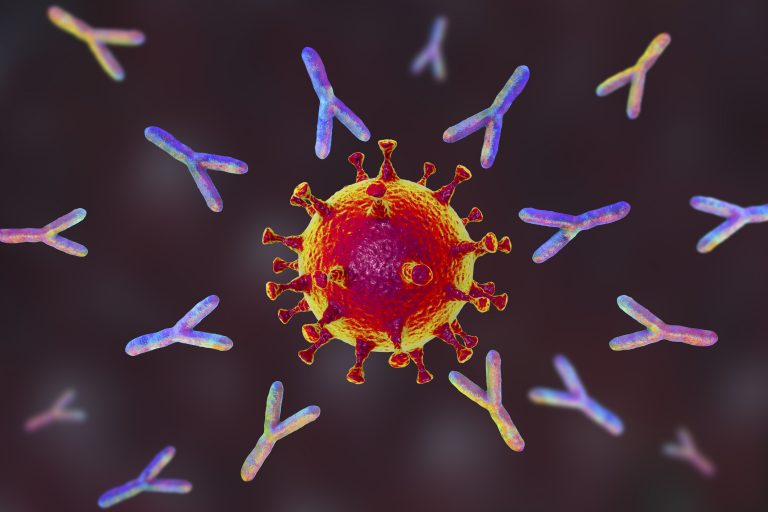
A team of researchers from Institut Pasteur, the CNRS, and the VRI (Inserm/University Paris-Est Créteil) have demonstrated that SARS-Cov-2 infection induces polyfunctional antibodies by studying the antibodies induced in individuals with asymptomatic or symptomatic COVID-19.
Beyond neutralization of the virus, these antibodies can activate NK (natural killer) cells or the complement system, leading to the destruction of infected cells. Antibody levels are slightly lower in asymptomatic as opposed to symptomatic individuals, but polyfunctional antibodies were found in all individuals. These findings show that infection induces antibodies capable of killing infected cells regardless of the severity of the disease.
The research was published in Cell Reports Medicine in a paper titled, “Asymptomatic and symptomatic SARS-CoV-2 infections elicit polyfunctional antibodies.”
The extent of the antiviral functions of SARS-CoV-2 antibodies is poorly characterized. Antibodies are capable of both neutralizing the virus and activating “non-neutralizing” functions. The latter include antibody-dependent cellular cytotoxicity (ADCC) and complement activation, which are major components of the immune response and play a key role in the efficacy of some vaccines. The ability of antibodies to activate these non-neutralizing functions has been little described for SARS-CoV-2 infection so far.
The teams from the Institut Pasteur, the CNRS, and the VRI (Inserm/University Paris-Est Créteil) initially developed assays to measure the various antibody functions by studying cell death induced by NK cells or by complement in the presence of antibodies. By analyzing cultures in real time using video microscopy, the scientists showed that NK cells kill infected cells in the presence of antibodies, demonstrating new antiviral activity employed by SARS-CoV-2 antibodies.
“This study demonstrated that individuals infected with SARS-CoV-2 have antibodies that are capable of attacking the virus in different ways, by preventing it from entering cells (neutralization) or by activating NK cells to kill infected cells (via ADCC). We, therefore, use the term polyfunctional antibodies,” explained Timothée Bruel, PhD, a scientist in the Institut Pasteur’s virus & immunity unit and at the VRI.
The scientists examined the serum of patients with symptomatic or asymptomatic forms of COVID-19 with their new assays. They analyzed antibody functions in 52 asymptomatic infected individuals, 119 mild, and 21 hospitalized COVID-19 patients.
They measured SARS-CoV-2 anti-Spike IgG, IgA, and IgM levels with the S-Flow assay and map IgG-targeted epitopes by Luminex. They also used the S-Fuse assay to measure the neutralization capacity of these antibodies. By comparing different groups of patients, the scientists then showed that asymptomatic individuals also have polyfunctional antibodies and that their response is slightly weaker than those of patients with moderate forms of COVID-19.
“The study reveals new mechanisms of action of SARS-CoV-2 antibodies and suggests that the protection induced by an asymptomatic infection is very close to that observed after a symptomatic infection,” concluded Olivier Schwartz, PhD, head of the virus & immunity unit, Institut Pasteur and at the VRI.













